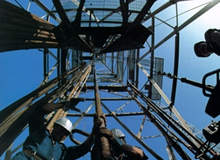
Dominican Petroleum Refinery (Refidomsa) is located close to the Haina Occidental port in the Dominican Republic. Commissioned in early 1973, the refinery has a hydro-skimming configuration and produces 34,000 barrels a day. The refinery imports 30 million barrels of crude and related products each year.
The refinery was formed as a joint venture between the Dominican Government and Shell International Petroleum with equal shareholdings. In December 2008, the Dominican State acquired Shell’s 50% stake for $110m.
In November 2009, the Dominican Government sold a 49% stake in the refinery to Petróleos de Venezuela (PdVSA), for $131.5m. The sale was in lieu of part payment of $1bn owned by the Dominican Government to Venezuela for the crude oil supplied under the PetroCaribe agreement.
As part of the agreement, the refinery will get 30,000b/d from Venezuela in addition to the 50,000b/d supplied under the PetroCaribe alliance.
PetroCaribe
The PetroCaribe alliance, launched in 2005, enables members from the Caribbean to buy crude oil from Venezuela under preferential terms. The Dominican Republic signed the agreement in September 2005. The agreement allows the members to purchase up to 185,000b/d oil from Venezuela.
Dominican Petroleum Refinery is located close to the Haina Occidental port in the Dominican Republic.”
Venezuela plans to expand the Refidomsa refinery, along with eight other refineries in the Caribbean and Central America, under the PetroCaribe alliance. The plan, estimated to cost about $24bn, will bring the total refining capacity of the region to 580,000b/d by 2012.
The alliance was the brainchild of Venezuelan president Hugo Chavez. The alliance deals only with state-run companies.
The other members in the alliance include Antigua and Barbuda, the Bahamas, Belize, Cuba, Dominica, Grenada, Guyana, Jamaica, Nicaragua, Suriname, St Lucia, St Kitts and Nevis, and Saint Vincent and the Grenadines.
Infrastructure
The refinery receives crude through a monoboya lying around three miles off the Palenque coast. The crude from the monoboya is transferred to tanks at an oil storage terminal situated in Nice through underwater pipelines. A 28-mile long pipeline pumps the tanks linked to facilities at the Haina Occidental port.
Finished products are transferred through multiple pipelines from the Port of Haina. The refinery receives LNG and at times other finished products in a separate Bouy located 500 yards offshore.
The refinery has modern defences in place to ensure tight security. In addition, the project has a mooring system and facilities for fighting fires and oil spills.
Process
The Refidomsa refinery follows the older hydroskimming technology. Hydroskimming removes sweet sulphur (low content) from the crude, producing fuels with high-sulphur content. The process cannot remove heavier sulphur content and does not have a hydrogen production unit.
Hydroskimming refineries are shifting to modern technologies or upgrading additional facilities for hydrotreating. This helps them withstand the rise in crude oil prices as sweet sulphur is getting costlier than sour sulphur. Moreover, the demand for fuels with high sulphur content is coming down.
Background
The Dominican Government invited international companies for the development of an oil refinery in 1967. In 1969 it was decided to develop a refinery with a crude processing capacity of up to 30,000b/d to fulfill domestic fuel demand.
The investment was estimated to be around $30m. The project was named Refineria Dominicana de Petroleo in which the Dominican State and the Shell Company held 50% each.
PdVSA and Refidomsa refinery signed a contract for the purchase-sale of crude oil and by-products in 2005.
In 2007, Shell reviewed its portfolio in the Dominican Republic, where it had an interest in the refinery as well as a storage terminal.
In December 2008, Shell sold its stake in Refidomsa to Dominican Republic. Previously, the organisational structure of the refinery comprised eight members with four from each partner. The structure was changed upon acquisition. Currently, the members are appointed by the state.



